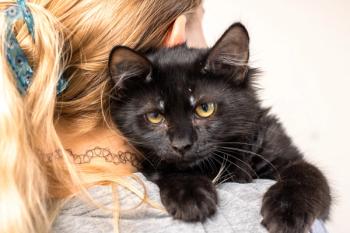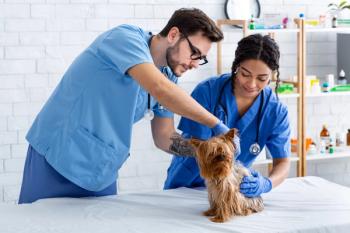
|Articles|October 1, 2010
Successful anesthesia takes the whole team
All veterinary team members play a role in providing patients safe anethetic experiences.
Advertisement
Receptionists, make sure that:
- Surgeries are scheduled with the proper time allotted
- The client is called before surgery with a reminder to withhold food
- Clients sign proper documentation that contains correct contact information just in case the doctor has questions or there is an emergency.
Kennel attendants, make sure to:
- Ensure food is withheld before the procedure
- Provide comfortable, clean bedding for the recovering patient
Advertisement
- Watch the patient and ensure that postoperative vitals are being checked regularly either by you or other staff members and that the patient remains comfortable.
Whoever takes the patient's history, make sure the history includes:
- Medications the patient is receiving and when they were last given
- Past health problems
- A note that food was withheld.
Credentialed veterinary technician anesthetists, make sure to:
- Look at the patient and read its file
- Ask any questions or raise concerns before the patient is anesthetized
- Have a clear understanding of all medications the patient is receiving.
Veterinarians, make sure to:
- Discuss the case with your staff
- Write clear preoperative, perioperative, and postoperative orders
- Dose medications carefully and choose the proper drugs
- Communicate with pet owners about what they can expect.
Newsletter
From exam room tips to practice management insights, get trusted veterinary news delivered straight to your inbox—subscribe to dvm360.
Advertisement
Advertisement
Advertisement
Trending on dvm360
1
Mental health and the use of AI in veterinary medicine
2
Nonpharmacologic ways of managing pain and separation anxiety in dogs
3
Education partnership provides more global learning opportunities
4
Veterinary practice marketing service providers are merging
5




